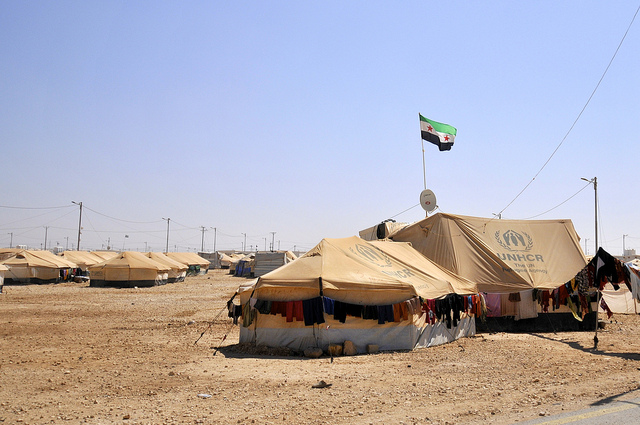
As the UN summit addressing large movements of refugees and migrants approaches this September it's worth looking at new approaches to the refugee crisis in the Levant. The refugees of the Levant are trapped between the war in Syria and an ever-worsening humanitarian crisis. The Inter-Agency UN
Regional Refugee and Resilience Plan (3RP) that was designed to help them is failing. The countries hosting the
4,815,540 registered Syrian refugees don’t have the resources or infrastructure to continue without a new approach. Many refugees simply want work and the chance to
return home. The Syrian war shows no signs of ending and without more funding to assist refugees, the Levant is at risk of civil strife, the degradation of government institutions and recession. Donors must fund and implement the 3RP targets to stabilise the spiralling humanitarian crisis. A new plan for the economic integration of refugees should be developed in conjunction with refugee host countries.
Jordan, Iraq, Lebanon and Turkey are struggling to accommodate their refugee populations. Syrian refugees now comprise
13.28% of Jordan’s population and Lebanon reached demographic saturation point two years ago, with 1.5 million refugees and 3.3 million out of its 5.9 million population requiring
aid assistance this year. Iraq is still at war and Turkey has made a
heavily criticised refugee return deal with the EU.
The 3RP is failing because of systemic underfunding that has compromised service delivery. Only
US$1.38 of the $4.54 billion needed has been funded as part of an
already reduced budget.
Despite record pledges, the allocation and disbursement of funds has been
too slow. The same
funding gap issues occurred in 2015, harming aid assistance and resulting in a severe revision in the size and scope of aid projects. Overwhelmed government infrastructure is degrading. Without funding, people won’t receive aid, which will increase pressure on those in extreme poverty to turn to
negative coping strategies such as crime, being forced into selling received aid and taking on unrepayable debt.
A long-term plan to integrate refugees into their host economies should be undertaken by regional governments with assistance from aid donors. This will be critical for regional rehabilitation, as the economies of Jordan, Iraq, Lebanon and Turkey would improve whether refugees stay with them or return to transform their old home into a viable trading partner once the violence ends. That would require the assessment, education, training and integration of refugees into their host countries’ economies
en masse. Each country would need to expand its economic vision to reflect this process.
That would be as much a sociological integration as it would be an economic one. Selling the idea is a politically daunting task. Four out of five countries already have official unemployment rates that are
10% or higher. Some also lack direct political control over refugee areas, such as Hezbollah’s control of the Bekaa Valley and the fluid Kurdish territory in Iraq. These could be limiting factors but the status quo cannot be maintained.
The introduction of
Special Economic Zones (SEZs) in Jordan, as proposed by Alexander Betts and Paul Collier, is a potential model of integration. The linking of the King Hussein Bin Talal Development Area and four other SEZ zones aims to give out 200,000 work permits to Syrian refugees. That has improved the lives of the Syrians able to get permits, created positive relations with Jordanians and
assisted the economy. However
only 20,000 permits have been handed out so far and
657,203 registered Syrians remain in Jordan. This highlights several challenges to rolling out SEZs on a large scale in a short amount of time.
The creation of the SEZs and their linkages with businesses requires high levels of financial assistance, coordination and ethical management to serve both businesses and refugees. Governments will need to be supported by funding and specialised economic expertise from aid donors. It’s crucial for the wellbeing of refugees not to turn them into working poor, as cases of labour exploitation have come to light in
Jordan, Lebanon and
Turkey. Refugee skill-sets should be utilised to the fullest; putting skilled workers in low or unskilled work is a lost opportunity for the host country to expand skilled industries. Training courses to bridge accreditation gaps would be a small investment that could go a long way to integrating refugees. Diverse skill-sets will be needed to rebuild Syria and Iraq, or if the refugees stay, turn them from an economic burden into an advantage.
The traditional model of humanitarian aid has failed. The 3RP plan should act as the humanitarian stabiliser that creates a platform for economic integration. We must accept that refugees will be spread across the Levant for years. Future aid should be directed at economic plans for refugees to work in their host countries. The sooner their economic integration occurs, the greater the chance of a strong future for Syrian refugees and for the Levant.
 Print This Post
Print This Post